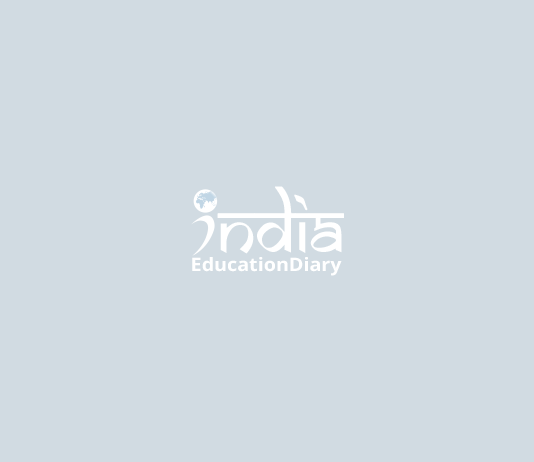New Delhi: Against the backdrop of renewed efforts to control tuberculosis (TB) worldwide, the need to ponder upon the improved methods to estimate the public health impact of TB programs is quintessential. The nation has stepped progressively in 2017 but, after 50 years of TB control activities, the disease still remains a major health challenge in India. Tuberculosis falls under the category of curable and eradicable diseases. Yet, despite a drastic decline in the disease burden of TB in the past decade the disease continues to affect a sizable section of population in rural and urban belts of the country. On account of World Tuberculosis day, The IIHMR University Jaipur shares important insights and its contribution in TB prevention and control at national and regional level.
Dr. Ashok Kaushik Dean (Academic and Student Affairs) IIHMR University Jaipur says, “India still suffers from over 3 million TB patients. According to the Global Status Report on Tuberculosis 2016, TB treatment does not reach about 41% patients in India. About 480,000 TB patients are killed every year and more than 1400 are killed every day. According to India’s Revised National TB Control Programme (RNTCP), notification of TB cases is estimated to be only 58% where over 1/3rd of the cases are not diagnosed, or they are diagnosed but not treated or they are diagnosed and treated but are not notified to the RNTCP. WHO Reports mentions that, up to 10 lakh Indians suffering from TB are not notified/ registered.”
The Government of India has been taking corrective measures in making India and its citizens a healthy and a productive and released the National Health Policy, 2017 which calls for more active case detection with greater involvement of the private sector supplemented by preventive and promotive action in the workplace and in living conditions. However, the nation suffers a huge burden of over 3 million people still suffering from the curable disease of Tuberculosis.
In addition to the identified cases of TB, there are numerous challenges exists such as undernourished population, lack of strong immunity, HIV in TB, pollution both indoor and outdoor, smoking. Such challenges lead to reactivation of TB; and need to be have targeted and robust awareness campaigns like Swachhata Abhiyan at national level to reduce reactivation of TB in the population. Delays in diagnosis, inadequate treatment and follow up, prolonged costly treatment and ill equipped public and private healthcare facilities aggravate the situation not allowing TB to be eliminated from the nation.
To understand the actual burden of Tuberculosis faced by the country, it is very important to understand the role of private sector in terms program implementation and research and knowledge creation as private sector contributes to 70% health sector of the country.
Dr. Kaushik added, “Proposed National Strategic Plan for Tuberculosis Elimination, 2017-25 states that it is important to reach out to all the Drug Sensitive TB and Drug Resistant TB cases with an emphasis on reaching TB patients seeking care from private providers and undiagnosed TB in high-risk populations. The report mentions that, this can be achieved by scaling up free and high-sensitivity diagnostics tests and algorithms, scaling up effective provider engagements, universal testing for drug resistant TB and systematic screening of high risk populations. The report mentioned that how to initiate and sustain all patients on appropriate anti-TB treatment wherever they seek care. This can be achieved by preventing the lost to follow up of TB cases in the cascade of care with support systems, by providing free TB drugs for all TB cases, appropriate and timely care in case of side effects, universal daily regimen for TB cases and rapid scale up of short-course regimens for drug-resistant TB and Drug Sensitivity Testing guided.”
The Indian Institute of Health Management Research (IIHMR), Jaipur and the South Asian Association for Regional Cooperation (SAARC) Tuberculosis and HIV/AIDS Centre (STAC) have technical tie-up for conducting training and capacity building for prevention and control of tuberculosis in the SAARC nations. The IIHMR has been instrumental in providing technical support to the STAC and providing training on Leadership & Strategic Management the region. The IIHMR with the WHO Regional Office for South-East Asia and National Tuberculosis Institute, Bangalore developed and field tested the training modules on Leadership & Strategic Management.
The IIHMR University has provided technical support to International Institute of Population Sciences (IIPS) and Government of India for conducting National Family Health Survey (NFHS 4). The NFHS -4 provided updates and evidence of trends in key health and nutrition indicators including TB and HIV prevalence, infant and child mortality, maternal and child health, high risk sexual behavior, non communicable diseases such as diabetes, hypertension, chronic kidney and lung diseases, domestic violence, etc.
Although India has managed to scale up basic TB services in the public health system, treating more than 10 million TB patients under RNTCP, the rate of decline is too slow to meet the 2030 Sustainable Development Goals (SDG) and 2035 End TB target.

